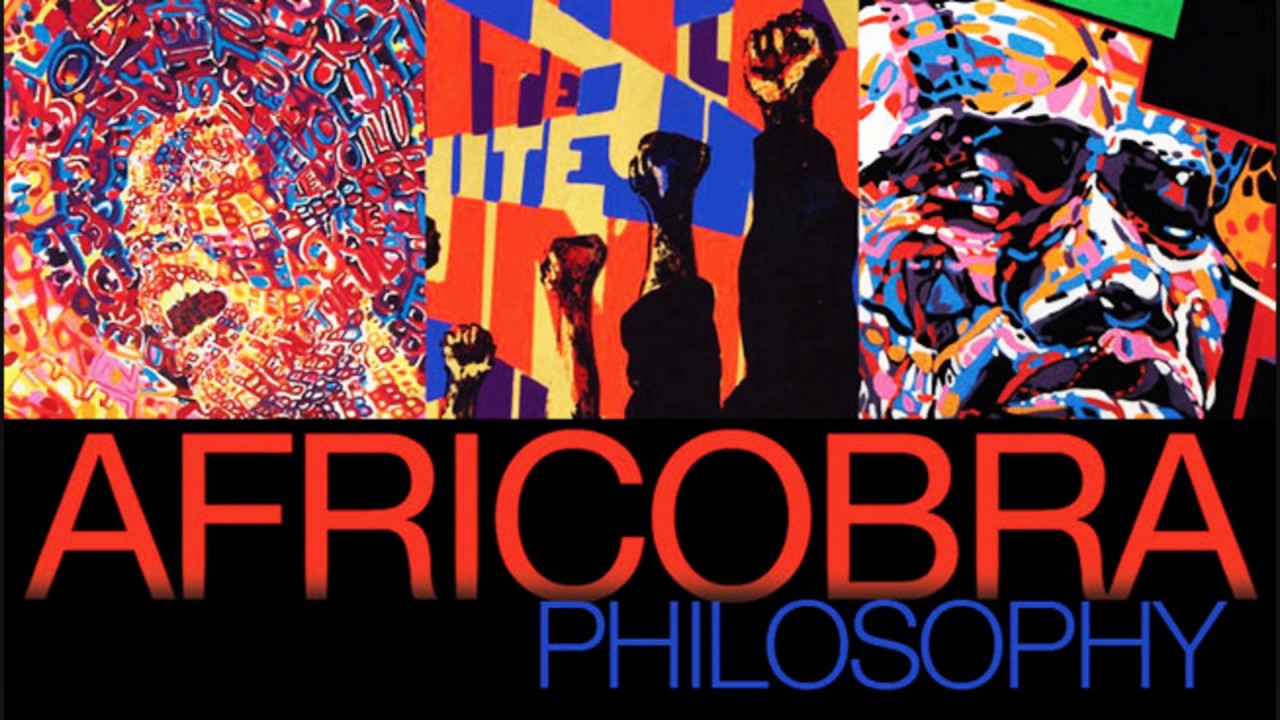
THE WALL OF RESPECT: The Wall of Respect was a mural first painted in 1967 by the Visual Arts Workshop of the Organization of Black American Culture (OBAC). The mural represented the contributions of fourteen designers, photographers, painters, and others, notably Chicago muralist William Walker. The work comprised a montage of portraits of heroes and heroines of African American history painted on the side of a building at the corner of Chicago's 43rd Street and Langley Avenue, an area called the Black Belt. Notable images included Martin Luther King, Jr., Nat Turner, Elijah Muhammad, Malcolm X, Muhammad Ali, Gwendolyn Brooks, W.E.B. Dubois, Marcus Garvey, Aretha Franklin, and Harriet Tubman.
The Black Arts Movement
Conclusion: The Movement's Breakup and Legacy
Kalamu ya Salaam
The Movement's Breakup
The decline of the Black Arts movement began in 1974 when the Black Power movement was disrupted and co-opted. Black political organizations were hounded, disrupted, and defeated by repressive government measures, such as Cointelpro and IRS probes.
Black Studies activist leadership was gutted and replaced by academicians and trained administrators who were unreceptive, if not outright opposed, to the movements political orientation.
Key internal events in the disruption were the split between nationalists and Marxists in the African Liberation Support Committee (May 1974), the Sixth Pan African Congress in Tanzania where race-based struggle was repudiated/denounced by most of the strongest forces in Africa (Aug. 1974), and Baraka’s national organization, the Congress of Afrikan People (CAP), officially changing from a "Pan Afrikan Nationalist" to a "Marxist Leninist" organization (Oct. 1974).
As the movement reeled from the combination of external and internal disruption, commercialization and capitalist co-option delivered the coup de grace. President Richard Nixon's strategy of pushing Black capitalism as a response to Black Power epitomized mainstream co-option.
As major film, record, book, and magazine publishers identified the most salable artists, the Black Arts movement's already fragile independent economic base was totally undermined.
The Legacy
In addition to advocating political engagement and independent publishing, the Black Arts movement was innovative in its use of language. Speech (particularly, but not exclusively, Black English), music, and performance were major elements of Black Arts literature.
Black Arts aesthetics emphasized orality, which includes the ritual use of call and response both within the body of the work itself as well as between artist and audience. This same orientation is apparent in rap music and 1990s "performance poetry" (e.g., Nuyorican Poets and poetry slams).
While right-wing trends attempt to push America's cultural clock back to the 1950s, Black Arts continues to evidence resiliency in the Black community and among other marginalized sectors.
When people encounter the Black Arts movement, they are delighted and inspired by the most audacious, prolific, and socially engaged literary movement in America's history.
Kaluma ya Salaam
Kalamu ya Salaam is New Orleans writer, filmmaker and educator. Kalamu is a senior staff member of Students at the Center, a writing program in the New Orleans public schools. He is the moderator of neo•griot, an information blog for black writers and supporters of our literature worldwide. Kalamu can be reached at kalamu@mac.com.
Black Arts Movement
Suggested Readings
In an overwhelmingly successful effort to capitalize on the upsurge of interest in the feminist movement, establishment presses focused particular attention on the work of Black women writers. Although issues of sexism had been widely and hotly debated within movement publications and organizations, the initiative passed from Black Arts back to the establishment.
Emblematic of the establishment overtaking (some would argue "co-opting") Black Arts activity is Ntozake Shange's for colored girls, which in 1976 ended up on Broadway produced by Joseph Papp even though it had been workshopped at Woodie King's New Federal Theatre of the Henry Street Settlement on the Lower East Side. Black Arts was not able to match the economic and publicity offers tendered by establishment concerns.
Corporate America (both the commercial sector and the academic sector) once again selected and propagated one or two handpicked Black writers. During the height of Black Arts activity, each community had a coterie of writers and there were publishing outlets for hundreds, but once the mainstream regained control, Black artists were tokenized.
Although Black Arts activity continued into the early 1980s, by 1976, the year of what Gil Scott-Heron called the "Buy-Centennial," the movement was without any sustainable and effective political or economic bases in an economically strapped Black community.
An additional complicating factor was the economic recession, resulting from the oil crisis, which the Black community experienced as a depression. Simultaneously, philanthropic foundations only funded non-threatening, "arts oriented" groups. Neither the Black Arts nor the Black Power movements ever recovered.